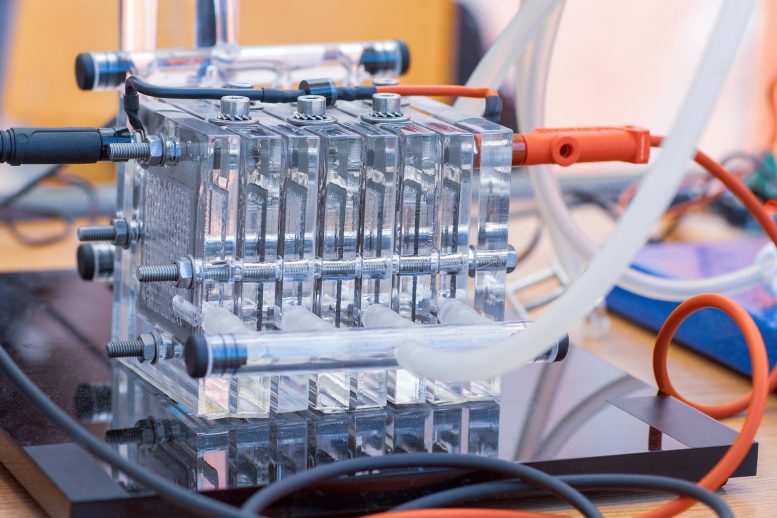
Researchers demonstrated that splitting hydrogen from oxygen in water can be accomplished through the use of low-cost metals such as iron and nickel as catalysts. These catalysts accelerate the reaction and reduce the energy required.
Scientists show how using only water, iron, nickel and electricity can create hydrogen energy much more cheaply than before.
Hydrogen-powered cars may soon become more than just a novelty after a UNSW-led team of scientists demonstrated a much cheaper and sustainable way to create the hydrogen required to power them.
In research published in Nature Communications recently, scientists from UNSW Sydney, Griffith University, and Swinburne University of Technology showed that capturing hydrogen by splitting it from oxygen in water can be achieved by using low-cost metals like iron and nickel as catalysts, which speed up this chemical reaction while requiring less energy.
Iron and nickel, which are found in abundance on Earth, would replace precious metals ruthenium, platinum, and iridium that up until now are regarded as benchmark catalysts in the ‘water-splitting’ process.
UNSW School of Chemistry’s Professor Chuan Zhao says in water splitting, two electrodes apply an electric charge to water which enables hydrogen to be split from oxygen and used as energy in a fuel cell.
“What we do is coat the electrodes with our catalyst to reduce energy consumption,” he says. “On this catalyst there is a tiny nano-scale interface where the iron and nickel meet at the atomic level, which becomes an active site for splitting water. This is where hydrogen can be split from oxygen and captured as fuel, and the oxygen can be released as an environmentally-friendly waste.”
In 2015, Prof Zhao’s team invented a nickel-iron electrode for oxygen generation with a record-high efficiency. However, Prof Zhao says that on their own, iron and nickel are not good catalysts for hydrogen generation, but where they join at the nanoscale is “where the magic happens”.
“The nanoscale interface fundamentally changes the property of these materials,” he says. “Our results show the nickel-iron catalyst can be as active as the platinum one for hydrogen generation.
“An additional benefit is that our nickel-iron electrode can catalyze both the hydrogen and oxygen generation, so not only could we slash the production costs by using Earth-abundant elements, but also the costs of manufacturing one catalyst instead of two.”
A quick glance at today’s metal prices shows just why this could be the game-changer needed to speed up the transition toward the so-called hydrogen economy. Iron and nickel are priced at $0.13 and $19.65 a kilogram. By contrast, ruthenium, platinum, and iridium are priced at $11.77, $42.13, and $69.58 per gram – in other words, thousands of times more expensive.
“At the moment in our fossil fuel economy, we have this huge incentive to move to a hydrogen economy so that we can be using hydrogen as a clean energy carrier which is abundant on Earth,” Prof Zhao says.
“We’ve been talking about the hydrogen economy for ages, but this time it looks as though it’s really coming.”
Prof Zhao says that if the water-splitting technology is developed further, there could one day be hydrogen refueling stations much like petrol stations today where you could go and fill up your hydrogen fuel-cell car with hydrogen gas produced by this water-splitting reaction. The refueling could be done in a matter of minutes as compared to hours in the case of lithium-battery-powered electric cars.
“We’re hoping our research can be used by stations like these to make their own hydrogen using sustainable sources such as water, solar, and these low-cost, yet efficient, catalysts.”
Reference: “Overall electrochemical splitting of water at the heterogeneous interface of nickel and iron oxide” by Bryan H. R. Suryanto, Yun Wang, Rosalie K. Hocking, William Adamson and Chuan Zhao, 6 December 2019, Nature Communications.
DOI: 10.1038/s41467-019-13415-8
Research paper authors: Bryan Suryanto (UNSW), Yun Wang (Griffith), Rosalie Hocking (Swinburne), William Adamson (UNSW) and Chuan Zhao (UNSW).


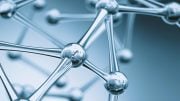

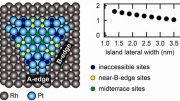
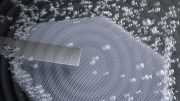

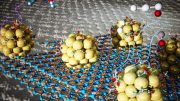
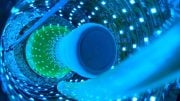
This is promising news but nowhere did I see anything about the conversion efficiency of the electrolysis. Without this, we have no way of evaluating whether the technology is worthwhile.
In addition, this statement is incorrect: “The refuelling could be done in a matter of minutes as compared to hours in the case of lithium-battery powered electric cars.”
The latest generation of electric cars, such as the Tesla, with their V3 Supercharger stations, are capable of adding 75 miles of range in 5 minutes. Some are even faster.
There are certainly pros and cons to Hydrogen, but it’s going to have to be more convenient and more efficient/less expensive than direct electric charging or it’s solving a problem that no longer exists.
Excellent analysis. The water molecule is a basic configuration and it is hare to see how we could split it much more efficiently than we do now. Good batteries could put this out of business. Perhaps a very efficient process could find applications for solar energy in isolated (but wet) locations. But not a game changer, in my opinion.
One item that people are forgetting is that hydrogen is not as energy dense as a petroleum product. It takes 2 tanker trucks of liquid hydrogen to contain the same energy as one of gasoline. Hydrogen has to be highly compressed which takes a LOT of energy. It also has to be kept at a very low temperature to keep from boiling off. So even if you had 100% efficiency in making the hydrogen it still takes a lot of energy to transport and store. It would be better to make a hydrocarbon fuel using excess Co2 from the atmosphere. That way it would be a carbon neutral fuel using an infrastructure that we already have.
Well. Condensing hydrogen cost 6.4 kWh per liter. The 2 tanker versus 1 tanker I am not sure about. I understand from chemistry (correct me if I am wrong), that 1 liter of liquid hydrogen weighs 14.1 kilogram? 1 kilogram of Hydrogen contains some 43 kWh of energy, thereby 1 liter of Hydrogen contains some 600 kWh (from 14 kilogram of it), while 1 liter of petrol contains some 12.5 kWh ??
What have I missed here?
At least someone understands energy conservation. Every conversion from one form of energy to another loses a bit. If the electricity could come from solar or wind (Ignoring the initial cost and maintenance of that infrastructure) this could be useful, otherwise the best compromise seems to be “Hybrid” technology since recharging stations will be slow coming to rural areas. Many believe that electric vehicles are totally clean, forgetting that the electricity has to be generated by some means somewhere. They like to forget the massive costs of infrastructure and energy usage making the components. These are all good ideas but not necessarily practical everywhere.
This would be a great option
For trains,planes,boats,and
Trucks . Electric cars are here
To stay.100 mpge and no maintenance!
Also consider the volt model… electric but with a gas-electric generator for extended range.
You could do the same thing with hydrogen as fuel.
It would be a great way to make use of the unused night time capacity of the electric grid.
The article doesn’t mention it but the authors report an extremely high efficiency of 83.7%, as well as a higher current density than with platinum. If this is real it would be a game changer for energy storage and petrochem.
Hydrogen should be used in the realm of large carrier vehicles, airplanes and large scale energy production. Ev tech will only progress future as tech becomes more advanced.
Hydrogen is the future. EVs got there first but hydrogen will win out.
Eventually there will be environmental concerns about all the used batteries. No one seems to mention this problem.
There is already a vast infrastructure to cater for hydrogen. Yes it will cost money to change but the businesses already in existence must be eyeing hydrogen to replace petroleum going forward. It would be suicide not to
Ted-san and Daniel point out the gaps in this article, but we still lack an understanding of production rates, actual efficiencies (what does 83.7% actually mean?) and suitable implementation strategies – would this be intended for small-scale (perhaps home-based) systems or would it be better ramped up into “industrial scale” systems?
Regarding charging time, most pundits are anticipating that instead of charging the battery in the vehicle, the battery itself will be swapped at a “refuelling station” in a matter of minutes – the technology to position a car precisely over a changing port, unclip and lower the existing battery then reverse the process for a new one is relatively simple to implement. It should take no more than a minute or two per car. I’d even contemplate including regenerative energy collection from the weight of the battery being lowered into the swapping well!
Also, in response to Connor M. Antico, I can’t ever imagine this being used in an aircraft – the weight of the fuel pressure vessel would be very prohibitive. Remember that the AvGas fuel tank is simply included as part of the aluminium (or other lightweight material) wings and belly of a commercial aircraft and lined with an impervious layer – that wouldn’t work for Hydrogen.
How about grid storage? Most benefit for the buck if meant to replace lithium-batteries. Maybe the water could even be recycled if a fuel cell is used for the reverse conversion to electricity.
Idiots. At best it’s a method for using energy to make hydrogen, not for making ‘hydrogen energy.’
Technical writing, for the uninformed, can get very strange. In this case, it is difficult to sort out readers and writers.
Well. Please use a nice languate, Mark. It is unpleasant to read your impolite outbursts. We all understand the article within its context, so why does it seem that you cannot understand?
*some of the following is not in order, relating to comments above*
Uuuhhhh… To start with the obvious, no energy is created.
The 83% efficiency is based on the single process of h2o “broken” into [2x] h2 and o2. In other words, a perfect process would be 100% efficient with no waste (or heat loss).
That actually seems like a moot point, since close to 90% efficiency has already been realized.
Battery swapping for vehicles (I published that concept over 20 years ago) won’t happen … especially at this pioneering stage. Herding kittens on meth would be far easier than get all of the major EV players (and countless upstarts) to agree to a battery SHAPE — and voltage standard — and there are many more variables than those.
I “almost” want to apologise for posting a comment here, but I truly appreciate any source that can potentially increase science knowledge and understanding.
I also hope that it’s no to absurd for me too hope that folks will research and truly think about issues before posting about them.
I fear that we have long ago crossed that [unwritten] rule/prerequisite.🤦🏼♂️🙂
Anyone here understand thermodynamics?
The hydrogen will come from the metals and not water!because water is not H20!
WTF?
My ipr is all over LinkedIn! See the Trillion dollar question, as my latest article/post.I am one of the 1st to see how plasma could explode the water molecules.that was way back in the late 1970’s.
Ok so reading this article seems to me that if we really what to use this very old tech which has been around for years can be done quite easaly if we really want to as a spices. But unfortuitally with the greed of big corporations eg oil companys this will be some years away. Electric cars are not exactly eco friendly like the crap we have been told, just to make these cars uses a carbon although is the long run would use less carbon than a pretrol or desiel car. Hydrogen is the fuel of the future and could be the fuel of right now if we all just made a commitment to use it as our main fuel source world wide.But the problem is that any body can make hydrogen even in there back yard so goverments are relucant to use this fuel source and it could no control its citizens in the way that it does with our current fuel source. Greed is the only reason this fuel is not world wide right now. I myself have got a lawnmower to run from an hho generator that i built from watching youtube videos 8 years ago. If i can do that in my back yard just imagine if we all put our minds together what we could do. Just a thought.
Using gaseous hydrogen directly, either as a cell fuel or in a ICE is fraught with problems, not the least of which is the need for very high pressure storage (2000-3000PSI) tanks. Beyond that, high pressure refueling is not for the casual, lackadaisical types often found at gasoline pumps. Fuel transportation is likewise complicated by the need to move and store hydrogen gas at high pressure.
The answer is to develop high-capacity fuel cells that can be fueled with methanol which, BTW, is a liquid, and can be transported, stored and delivered with the same infrastructure we currently use for gasoline. Methanol can also be directly used in an ICE vehicle.
Article is very interesting. Unfortunately, it does not address a few key points that make it an unattractive option. First, to be stored, it must be compressed to be stored, which costs energy and reduces it economic viability. Secondly, storage and leakage of hydrogen from storage will be a key problem. Already, laboratory locations that use hydrogen for research have very strict limits on hydrogen in the air because of the possibility of explosions. What will be the concerns when we have excess hydrogen from storage containers all over the place, especially cars. The entire hydrogen energy cycle needs to be considered with regards to safety. I have never seen anything published with regards to safety with a hydrogen energy infrastructure.
This is another lab results article of “nano” size reactions. It does not say if the process is scale-able to produce large quantities which is currently the biggest issue with all break-thoughts in energy production. Basically everything is wonderful in small scale but when they try to scale up it becomes impossible or prohibitively expensive.
This technology can be “cost effective” without being particularly “energy efficient.” When the ultimate source of energy is free (solar, wind,..) and the process is nonpolluting all that matters is “cost to build/maintain” and sale price/value of hydrogen against fossil fuels.
“Inefficiencies” in the process just produce heat as a byproduct. But even this heat does not warm the planet since heat is what it (solar, wind, falling water,..) would have become had it not been temporarily diverted to electricity and hydrogen.
This technology will be a game changer for the world when electric power plants can be fuelled by hydrogen instead of coal at comparable cost, especially in emerging nations.
I have long been a believer in hydrogen as the go-to fuel of the future. I disagree, however, that large-scale creation and storage is the way forward. The game-changer comes when this technology matures to the point that the vehicle has an onboard hydrogen generator and the fuel tank is filled with nothing but distilled water.
And how will you convert the water to hydrogen? Don’t tell me “electricity” please.
It would be ideal, wouldn’t it?
A regenerative generator attached to all for wheels producing more power than the car uses through hydrogen, thus generating the energy necessary to manufacture hydrogen on board. Hmm…. Methinks physics might disagree. Might work on a train with all the wheels available it might be possible. How much resistance is there in making an electric motor spin so it generates electricity? How would it affect the performance of the motor driving the vehicle forward. Maybe UNSW could come up with the answers .
You mean perpetual motion? No, that was shown impossible 500 years ago. Next ……..
Large scale storage IS the answer for powering the grid at night. Hydrogen and wind, however much there is available at night, is the only way, aside from nuclear, that can facilitate the excising of fossils from our energy mix.
This is not H2 it is also O2 which is rocket fuel. 2H2O to 2H2 + O2 is never energy efficient. Power in is always lower than power out. Now you may become efficient in the night power grid at low use times but is still expensive and will never be cost effective. It is a matter of thermodynamics hydrogen cars are a waste of time and engineering resources.
“Power in is always lower than power out” Wrong way round.
Be patient. Wait 2 – 3 years and a company in Britain will be releasing new, highly efficient fuel cell technology designed to replace Lithium batteries in EVs. The designer has had his technology validated by two universitys and partnered with the manufacturing company in 2019. This could be a game changer.
This sounds interesting! Do you have more information about this?
The efficiency of water electrolysis is currently about 75-80% using Pt as catalyst. Raising it to 90% is really not going to make a significant difference. What is far more important is the efficiency of turning hydrogen back into useful energy. None beats the H2/Air fuel cell at about 50%. So in terms of electricity usage it’s 75% X 50% (37.5%)or 90% X 50% (45%). Not exactly life changing is it?
The link below shows how we fund the transition to a hydrogen economy, protect Australia from global economic ill winds, turbocharge our economy and keep the profits on shore for the benefit of every Australian
You’ve read nothing like it.
It is to the current business practices as unions were to indentured labour.
https://rubenscamejo.wordpress.com/2019/11/26/letter-sent-to-every-mp-in-the-federal-parliament/
is there a reason hydrogen generation couldnt be integrated into waste water plants to save potable water for human consumption?
This is all great news for anyone who doesn’t understand physics and economics. Just more rainbows and unicorn farts. Personally…my money is on the unicorn farts.
The only real alternative to carbon fuel is nuclear.
Unfortunately, thanks to the Luddites that seem to make up the majority of the dumbmasses, nuclear is not really an option.
Fortunately, we have a virtually unlimited supply of carbon based fuels, and after the current hysteria over carbon runs it’s course we’ll get back to making the planet a better place with carbon based fuels.
Why don’t you just make stronger alternator that way people can can make their own hydrogen fuel in their cars and they would only have to use water and they wouldn’t have to pay for it
Utter drivel. Back to school and start again.
Faraday never had electronics back in 1834. He did not have a semiconductor switch/transistor. He could not pulse some juice hundreds of thousands of times a second like we can today. None of these articles ever discuss the electrical input specifics. Pulsed DC (high frequency) changes the atomic structure of the H atom, its not about the output volume, its about the ‘atomic quality’ of the gas. Materials are great research, but nothin beats good ol stainless steel plates and a simple PWM (12Volt Pulse Width Modulator) ($30 ebay) and 42.8kHz, generates Orthohydrogen not Parahydrogen. It was already done alongtime ago and still being done. I learned it simply from guys online 15 years ago, and its very easy to do with a 12v car battery. Its quite obvious the #1 atom on the chart is the most important. It fulls our bodies for one, and is so small/abundant it pervades the mass of everything. Look at jupiter, a giant ball of h2 11 times the size of earth. It just so happens so conveniently that H is massively coupled with Oxy in a substance that covers 70% of our spinning rock. Strangely the same 70% of our body content. As for the universe, its all indefinitely moving. Thats the problem with being stationary around a center axis of gravity, you believe that everything is still, when in fact its all moving. A never ending swirl of swirls of goop all interacting. Thats why you can never find a beginning and will never find an end. Anyway.. its the ‘Q’-total electric charge and the ‘F’-constant thats faulty in Faradays equation for electrolysis cuz it was all based on just straight DC battery currents. Theres a good reason why a person cant stick there head in a microwave oven being pulsed 2000Volt DC-2.2million times a second. Why do you think a small black camera roll with a drop of water in it explodes/pops instantly in a microwave.
H-305k btu/gallon (not man made)
Gasoline-115k btu/gallon (man made with hydrogen/carbon)
Diesel-130 btu/gallon (man made with hydrogen/carbon)
Water is the definitely the answer. Best part about using both H and O from water as fuel. It combusts back into water. Hmm how comvenient IS that? Another endless process to use thats completely clean, zero emissions.
Used as liquid HO for rocketfuel and spaceshuttle for years..
the only thing stoppin us is still the same ol thing as it always has been, the ignorant factor-the human ego. Get past the scientific ‘whateverybody says crap’ and ridiculous social entertainment, and we’ll get somewhere.
k i’m done.
peace/happy new year
Ed, we would like to work this out with you. What is the benefit of converting Hydrogen into Orthohydrogen with 42.8 kHz PWM ???
I work with solar concentrator solutions and we are experimenting with creating H2 out of water. We would like to work with you on that one.
You can email us at [email protected] – feel welcome. We are going global with the solar concentrator solution, within the next 3-4 years.
Wonder if split hydrogen can become water again?
You combust it with oxygen and you have water.
SMH at sam harris losers again online. Nothing ever changes with you rwnjs and neocons as you know your days are numbered as bigots as scie3nce says your out. Even Keanu Reeves would go full neo on you trolls online. It’s always the same with you AEI morons since 1996.
About the electric cars, you could really extend or, almost get rid of the need to charge it if you would add an alternator in it, that way it can constantly recharge the battery while going.
Doesn’t all this speculation ignore the fact that the LEAST efficient way to move something around is to light it on fire? Internal Combustion Engines need to be cooled. If your goal is to make heat,then fine. If not, the heat is both a waste and problem.
42.8khz = 4x energy potential. Just use whatever cell ya got in both ways, 1. straight DC, 2. Pulsed DC with simple PWM circuit, same voltage, and test the explosiveness of the gas (explode the bubbles out the top of a container of water with a lighter) and you’ll completely be able to tell the difference. A basic tube with water as a bubbler is the best flashback prevention for hydroxy, aka hho. I cant remember where I read it, but years ago, there was a statement about Hydroxy having a velocity of couple miles a second, and with the tests I’ve done, I definitely believe it, its super fast.
Heres a good one.. a simple ‘HHO velocity’ google search gave this link.
https://www.sciencedirect.com/science/article/pii/S1110016815001714
Nice to see a buncha good truthful data about our beloved fluid.
And it looks like of course there are multiple publications/references proving the correct scientific facts. Shows a ‘dry-cell’ used tho, which is a cheap easy to build but in-efficient design that produces gas, cuz all these dry-cells immediately have current leakages as the water/gas mixture rises and connects at all the holes in the neutral plates, but it won’t so much if you can somehow keep the fluid below the holes, but usually you cant see inside a dry-cell cuz of the gaskets used between the plates. Not sure, but looks like you Sci-Tech guys are using 7 cells with your testing anode/cathode neutral plates in the middle with +/- on each end plate, but if your electrolyte connects in anyway from cell to cell, which it looks like it is with the hole-tube manifold connections, then your wasting current right thru the fluid from end to end. What you want is a ‘real’ seperated-series cell (like a lead-acid car battery) that your working with which is always gonna be worthy and efficient if your current doesnt leak from cell to cell, and is forced to go thru only the plate material, only in the fluid of each seperated cell.
Or, ya could build a more difficult cell with multiple neutral plates that all sit in a box, and keep the level below the top of the plates, fluid is all seperated from cell to cell, like Bob Boyce’s design, and give it the correct voltage on each end plate.
and the wiki is perdy cool too, except for the bs at bottom, that someone shud remove.
https://en.wikipedia.org/wiki/Oxyhydrogen
hahaaa first welding gas ever used!!
and I really like seeing the old images of a simple water bubbler in the old electrolysis cell photos for backflash prevention. But then again, even the cell in the old photo wastes current if all the plates are just sumbmerged in same container of electrolyte cuz the current is just flowing all around the 3 neutral plates in the middle, to the other end plate thru the container of fluid. Its only an ‘efficient’ design build if all the cells fluid/electrolyte are seperated, and the current absolutely has to go thru the plate material. Its a ‘super efficient’ design using that setup with a PWM circuit at high frequency.
I personally like a series-parallel setup with multiple stainless plates in each cell, like a lead acid car battery, where the end plates of each cell are connected thru the seperated cell wall material. Its a much harder build but worth it.
This is where hydrogen can be split from oxygen and captured as fuel, and the oxygen can be released as an environmentally-friendly waste.”
O2 as friendly waste don’t hospitals, firefighters, Scuba use this in abundance ????
Is this really useful in a sustainable energy scenario? The biggest problem with hydrogen is that it is a gas which requires huge energy to compress or liquify. Ethanol is already a liquid! An ethanol fuel cell would be more useful. (Or a fuel cell that works with any other energy feed molecule which we can conveniently produce)
I REALLY don’t want to stop by the ‘hydrifen station’s and buy a product to enable my transportation. It’s a STEP BACKWARDS! Much better to charge with my own solar panels. That only works for suburban and rural people, I know. Bit I am one of those. And why? Cost savings and been down the road with energy retailers…who take advantage of every political and financial blip to bend is over and scalp the public of more money. Not to MENTION what they do to our political system with their coffers of cash. Ixnay on energy cpanus powering personal transportation, because I guarantee the petroleum companies , who’ve all changed their names to energy companies, are behind the push for a hydrogen economy so they can profit off our need for transportation
Everyone seems to forget the fact that hydrogen burns. We already have ICEs that can burn this fuel without having to be an EV
Nickel, iron and water are FAR more abundant resources than lithium.As of geological surveys done in 2019 it would not be possible for every car on earth to be replaced with electric power using lithium,of course having to replace those every 150,000 miles on average,simply an unreasonable alternative to fossil fuels we need to consider hydrogen as a potential planet saver or keep searching for other means as lithium is not abundant enough to be a long term reality for an energy replacement its merely a novelty for the wealthy.
How do I see,how the process works,by making hydrogen using nickel and iron has catalyze,
how the method is done………..